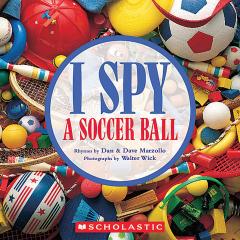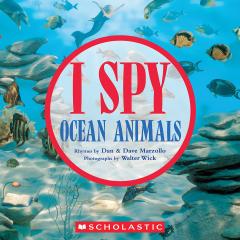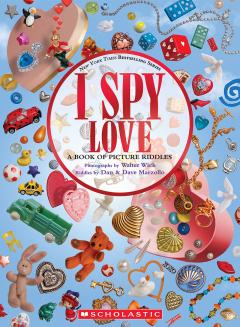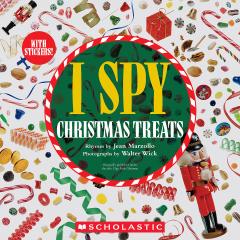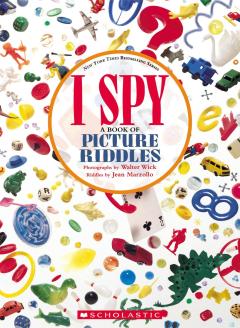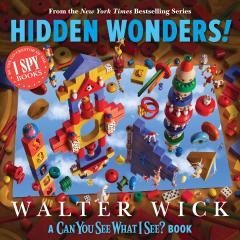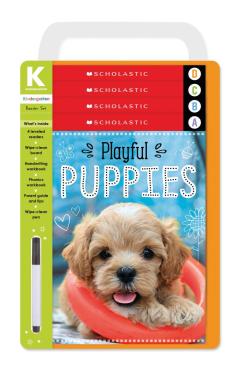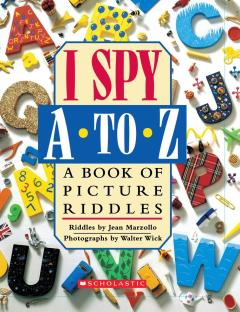
Can You See What I See?: Picture Puzzles to Search and Solve: Picture Puzzles to Search and Solve
Hardcover
About this book
With his signature style of photographic artwork, Walter Wick takes picture puzzles to a new level with Can You See What I See? Twelve tantalizing photographs are filled with fascinating objects, while rhyming text challenges readers with lists of items to seek and find. The text on each spread ends with a twist. Readers must go back and solve brain-teasing puzzles: follow an alphabet maze, identify parts needed to build a robot, discover objects in a mirror image that doesn't quite reflect what's really there! This book will provide hours of fun to puzzle-lovers of all ages!Reviews
Wick (Walter Wick's Optical Tricks; the I Spy series) unleashes his boundless imagination to devise a dozen playful picture puzzles, each with a distinct theme. The large-scale photographs feature a carefully choreographed assortment, of contemporary and vintage toys and other kid-pleasing paraphernalia. Alongside the images, a deceptively simple verse instructs youngsters to spot specific items in the picture. The author cleverly tweaks the game at the end of each rhyme, inviting readers (sometimes rather cryptically) to enter a puzzle-within-a-puzzle: they must either follow a maze, match two sets of objects, find differences in seemingly similar images or spot an optical illusion. Several of Wick's compositions stand out as particularly novel: one photo set in a wood shop reveals freshly carved animal figures, sprinkled with wood shavings; another assembles hundreds of miniature animals, beads and other objects used in making play jewelry-all of them translucent and sparkling against a white background. Even sharp-eyed readers will find some or Wick's puzzles quite challenging to complete. These pages are nearly guaranteed to keep kids happily occupied for hours and coming back for return visits.--Publishers Weekly, Jan. 7, 2002, starred review
Fans of Wick's and Jean Marzollo's I Spy series will be thrilled with a new challenge while newcomers will become immediate devotees with this dozen of picture puzzles to search and solve. With Wick's usual frenzied color-photo montages, each spread has rhyming clues to locate a variety of game objects. The caption of each puzzle indicates the theme, such as "String Game," "Card Tricks," "Domino Effect," and "Magic Mirror." An author's note explains that he has combined classic search-and-find puzzles with other familiar types of puzzles. Some are mazes, some are matching games, some are spot-the-difference games, and some are simple cryptic games with a few optical ones for good measure. The cover even contains a rebus for the title. There's a plastic-jointed, Weeble People-type figure that appears like Waldo in each peripatetic scene. So sharpen your visual acuity and be prepared to be absorbed and engrossed in this amazing entertainment that will keep espyers returning again and again.
--Kirkus Reviews, Jan. 15th 2002
From the rebus that reveals the title of the book on the cover to the very last spread, Wick once again provides youngsters with hours of puzzle-solving fun. Game-board endpapers usher them into a variety of games, all of which begin with the question, "Can you see what I see?" In this venture, however, Wick's marvelous photographed environments present more than hunt-and-find exercises, though there are plenty of those kinds of challenges in every rhyme. But just when youngsters may think they have things under control, the end of each rhyme offers a new puzzle-sometimes a maze, sometimes an invitation to uncover an optical illusion or find differences in like objects. "See-Through" requires readers to expose camouflaged items. "Spare Parts," a spread that resembles a junk drawer, has them playing a matching game, as does "Assembly Required," in which readers must look at "I. Seemore's" plans for building a robot and find the pieces necessary for completing it. The plans include a bit of humor by showing a frightened mouse's view of the robot. Mirror tricks and the humorous objects in each spread add to the fun. Wick's fans will relish his explanation of his work at the end of the book and may even find some puzzle-solving hints. This is "I Spy" and much more!
--School Library Journal, March 2002, starred review
